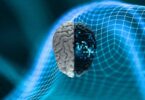A panic attack is a distressing experience, but with proper understanding and appropriate treatment and self-care strategies, it is possible to overcome it and regain a full life.
Panic Attack: An In-Depth Look
A panic attack is a sudden episode of intense fear or discomfort that peaks within minutes. During this time, the person experiences a range of frightening physical and psychological symptoms, often without actual danger. It is important to differentiate an isolated panic attack from panic disorder, which involves the recurrence of these attacks along with persistent worry about future episodes.
Essentially, a panic attack can feel like standing on the edge of a cliff, with no way to stop the fall.

Physical Symptoms of a Panic Attack: The Body on Alert
The physical symptoms of a panic attack are diverse and intense. Palpitations, rapid heartbeat, or tachycardia are common, which can lead a person to believe they are having a heart attack.
Excessive sweating, uncontrollable tremors, or shaking are also typical physical manifestations.
In fact, the feeling of shortness of breath or suffocation, along with a feeling of tightness or pain in the chest, can increase the distress and fear of dying.
In addition, nausea or abdominal discomfort, feelings of dizziness, unsteadiness, lightheadedness, or fainting, and sudden chills or a sensation of heat contribute to the unpleasant physical experience.
For example, some people may experience paresthesias, which are sensations of numbness or tingling in different parts of the body.
Psychological Symptoms of Panic Attacks: The Stormy Mind
The psychological symptoms are equally overwhelming. Derealization, the feeling that one’s surroundings are not real, and depersonalization, the feeling of being detached from oneself, can be particularly disconcerting.
These symptoms can make a person feel as if they are living in a dream or outside their own body.
Furthermore, the fear of losing control, going crazy, or dying is a central component of panic attacks. This intense fear can lead a person to avoid situations they believe might trigger another attack.
Consequently, anxiety attack not only affect the body but also have a profound impact on the mind and emotions.
Causes and Risk Factors of Panic Attacks: Unraveling the Origin
The exact causes of anxiety attack are not fully understood, but they are believed to be the result of a complex combination of biological, psychological, and environmental factors.
First, genetics may play an important role.
People with a family history of panic or anxiety disorders are at higher risk of developing these attacks.
In addition, certain biological factors, such as imbalances in neurotransmitters (brain chemicals) like serotonin and norepinephrine, can contribute to the onset of anxiety attack.
On the other hand, psychological factors such as significant stress, whether due to major life events, trauma, or persistent worries, can trigger a anxiety attack.
Also, some medical conditions, such as thyroid problems, heart disease, or irritable bowel syndrome, may be associated with an increased risk of anxiety attack.
Finally, the use of substances such as caffeine, alcohol, or drugs, or withdrawal from them, can trigger or exacerbate panic attacks.
The Mechanism of a Panic Attack: An Overreaction
During a panic attack, the sympathetic nervous system, responsible for the body’s “fight or flight” response, is overly activated. This activation causes the release of stress hormones, such as adrenaline, which trigger the characteristic physical symptoms of the attack.
Essentially, the brain misinterprets imminent danger, even when it isn’t, and triggers a series of physiological reactions to address that perceived danger.
Therefore, the heart beats faster, breathing quickens, muscles tense, and senses become more acute. These reactions, which would be helpful in a real dangerous situation, become overwhelming and terrifying in a panic attack.
Neurobiological Mechanisms Involved in Panic Attacks
At the neurobiological level, during a panic attack, there is excessive activation of the sympathetic nervous system, responsible for the “fight or flight” response. This activation releases a cascade of neurotransmitters and hormones, such as adrenaline, which explain many of the physical symptoms experienced.
Furthermore, dysfunction has been observed in certain areas of the brain, such as the amygdala (involved in fear processing) and the locus coeruleus (the main source of norepinephrine in the brain). Hyperactivity in these areas can contribute to the intensity and recurrence of attacks.
Consequently, the perception of a threat, even if not real, activates these brain structures, triggering the physiological response associated with panic.

Diagnosing a Panic Attack: Identifying the Problem
The diagnosis of a panic attack is based primarily on the symptoms described by the person. A mental health professional, such as a psychologist or psychiatrist, will conduct a thorough evaluation to determine if the symptoms meet the diagnostic criteria for a panic attack.
However, it is important to rule out other medical conditions that may be causing similar symptoms. For example, cardiac, respiratory, or neurological problems may manifest with symptoms similar to those of a panic attack.
For this reason, the health professional may perform a physical examination and order laboratory tests or imaging studies to rule out these possibilities.
In addition, the mental health professional will assess the frequency, intensity, and duration of the symptoms, as well as the impact they are having on the person’s life.
Differential Diagnosis
It is essential to perform a differential diagnosis to rule out other medical conditions that may present symptoms similar to a panic attack. Cardiac, respiratory, neurological, or endocrine problems may manifest with palpitations, shortness of breath, or dizziness.
For this reason, a complete medical evaluation, including a physical examination and, in some cases, additional testing, is essential to establish an accurate diagnosis.
Furthermore, it is important to distinguish panic attacks from panic disorder, where attacks are recurrent and unexpected, and there is persistent worry about the possibility of having more attacks or their consequences.
Treatment for Panic Attacks: Regaining Well-Being
Fortunately, panic attacks are treatable. Treatment may include psychotherapy, medication, or a combination of both.
First, psychotherapy, especially cognitive-behavioral therapy (CBT), has been shown to be very effective in treating panic attacks. CBT helps the person identify and change the negative thoughts and behaviors that contribute to the attacks.
Specifically, CBT focuses on teaching the person to gradually confront feared situations and manage the physical symptoms of anxiety.
Additionally, exposure therapy, a technique within CBT, involves controlled exposure to the physical sensations experienced during a panic attack, such as increased heart rate or difficulty breathing, so that the individual learns not to fear them.
Secondly, medication can also be helpful, especially if panic attacks are frequent or severe. Antidepressants, such as selective serotonin reuptake inhibitors (SSRIs) or serotonin-norepinephrine reuptake inhibitors (SNRIs), can help reduce the frequency and intensity of attacks.
Additionally, benzodiazepines, a type of sedative, can be used short-term to relieve acute anxiety during a panic attack. However, they are not recommended for long-term use due to the risk of dependence.
It is important to emphasize that treatment should be individualized and supervised by a mental health professional.

Panic Attack Coping Strategies: Tools for the Present
In addition to professional treatment, there are coping strategies that can help a person manage a panic attack in the moment.
For example, deep, slow breathing can help calm the nervous system and reduce anxiety. A common technique is diaphragmatic breathing, which involves inhaling deeply through the nose, allowing the abdomen to expand, and exhaling slowly through the mouth.
Additionally, relaxation techniques, such as progressive muscle relaxation or meditation, can help reduce physical and mental tension.
Also, focusing on the present, using your senses to describe what you see, hear, smell, touch, and taste, can help distract your mind from frightening thoughts.
Another helpful strategy is to remember that a panic attack is temporary and that symptoms will peak within minutes and then subside.
Finally, seeking the support of a trusted loved one or friend can provide comfort and reassurance during an attack.
Panic Attack Prevention: Caring for Long-Term Well-Being
Preventing panic attacks long-term involves taking a comprehensive approach that encompasses physical, mental, and emotional care.
First and foremost, maintaining a healthy lifestyle is essential. This includes eating a balanced diet, exercising regularly, getting enough sleep, and avoiding excessive caffeine, alcohol, and drug use.
In addition, learning how to manage stress effectively is crucial. Relaxation techniques, such as meditation, yoga, or tai chi, can be very helpful.
It’s also important to identify and address life stressors, whether through problem-solving, assertive communication, or setting healthy boundaries.
Another important strategy is to build a strong social support network. Spending time with family and friends, participating in social activities, and seeking support from a support group can help reduce isolation and anxiety.
Finally, ongoing psychotherapy can be beneficial in preventing future attacks and maintaining long-term mental well-being.
Conclusion: A Path to Recovery
Panic attacks can be frightening and debilitating experiences, but it’s important to remember that they are treatable. With proper treatment and appropriate coping strategies, people who experience them can learn to manage them and regain control of their lives.
Ultimately, the key to overcoming panic attacks is to seek professional help, learn to manage stress and anxiety, and take a proactive approach to caring for their physical and mental well-being.
We invite you to read other articles of interest:
Gene Therapy: 1 Great Power of DNA. Heal!
Font:
American Psychiatric Association. (2013). Diagnostic and statistical manual of mental disorders (5th ed.). Arlington, VA: American Psychiatric Publishing.
Mayo Clinic. (n.d.). Panic attacks and panic disorder. Retrieved from https://www.mayoclinic.org/es/diseases-conditions/panic-attacks/symptoms-causes/syc-20376021
https://www.psyclinic.es/tratamientos-psicologicos/ansiedad/trastorno-de-panico/
https://algoritmos.aepap.org/algoritmo/82/ansiedad
https://psicologavigo.wordpress.com/2014/12/16/que-son-las-crisis-de-angustia/









